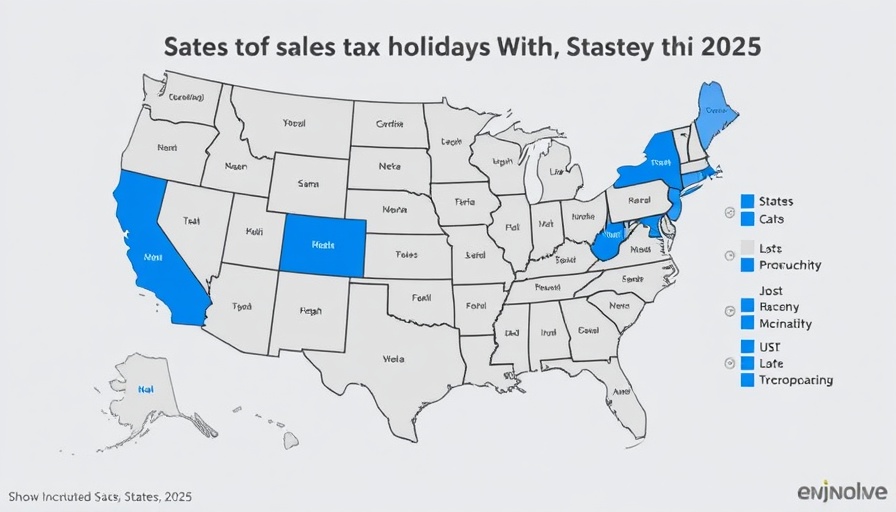
Understanding Sales Tax Holidays: Pros and Cons
Sales tax holidays in the United States are becoming a staple in state tax policies, set against the backdrop of rising consumer interest in immediate savings. In 2025, nineteen states have either enacted or will enact these holidays, allowing specific goods to be purchased without the burden of sales tax. While this might seem like a boon for buyers, it brings with it a plethora of economic implications and discussions about the effectiveness of such initiatives.
What Are Sales Tax Holidays and Why Do They Matter?
Sales tax holidays are designated periods when certain goods and services are exempted from state taxes. Common offerings include back-to-school supplies and seasonal items like hurricane prep kits. The popularity of these holidays is undeniable; they offer consumers the illusion of significant savings while generating buzz for local retailers. However, research shows that the majority of purchases made during these periods are simply shifted from other times of the year, resulting in no real economic growth. This displacement of consumer spending raises questions about whether the holidays truly benefit local economies.
Economic Effects: Are Consumers Truly Benefiting?
Despite the initial attractiveness of sales tax holidays, numerous studies point to a concerning trend: they merely shift consumer activity rather than stimulate additional spending. Consumers often plan their purchases around these holidays to benefit from tax savings, meaning state revenues suffer without tangible economic growth. This counterproductive effect illustrates the structural challenges within state tax codes, indicating a broader discussion about tax policy reforms is needed.
Potential for Policy Reform: Looking Ahead
The continuation of sales tax holidays might be a signal of an outdated tax system. If authorities are confident that suspending the sales tax temporarily could spur economic growth, it raises the fundamental question of whether the sales tax itself is too burdensome. Rather than temporary fixes, a thorough evaluation and reform of state taxation could provide more sustainable economic relief.
The Takeaway: Should You Plan Your Purchases Around Sales Tax Holidays?
For consumers pondering their shopping strategies for 2025, it’s crucial to plan wisely during these sales tax holidays. Despite the allure of saving a few dollars on purchases, it’s essential to recognize that these holidays might not provide as much economic uplift as advertised. Understanding the nature of consumer behavior during these periods allows for more informed purchasing decisions.
 Add Row
Add Row  Add
Add 

 Add Row
Add Row  Add
Add 



Write A Comment